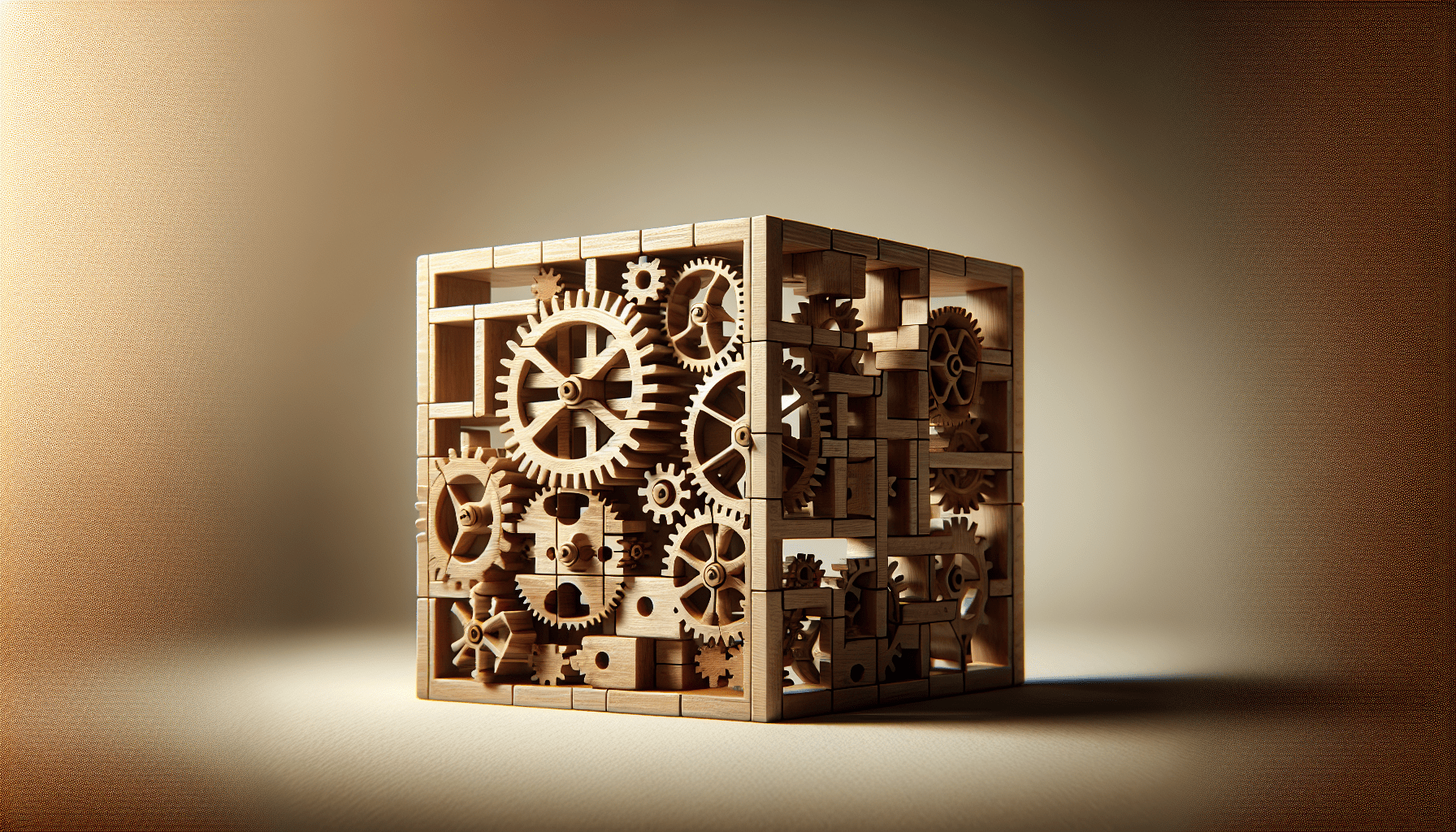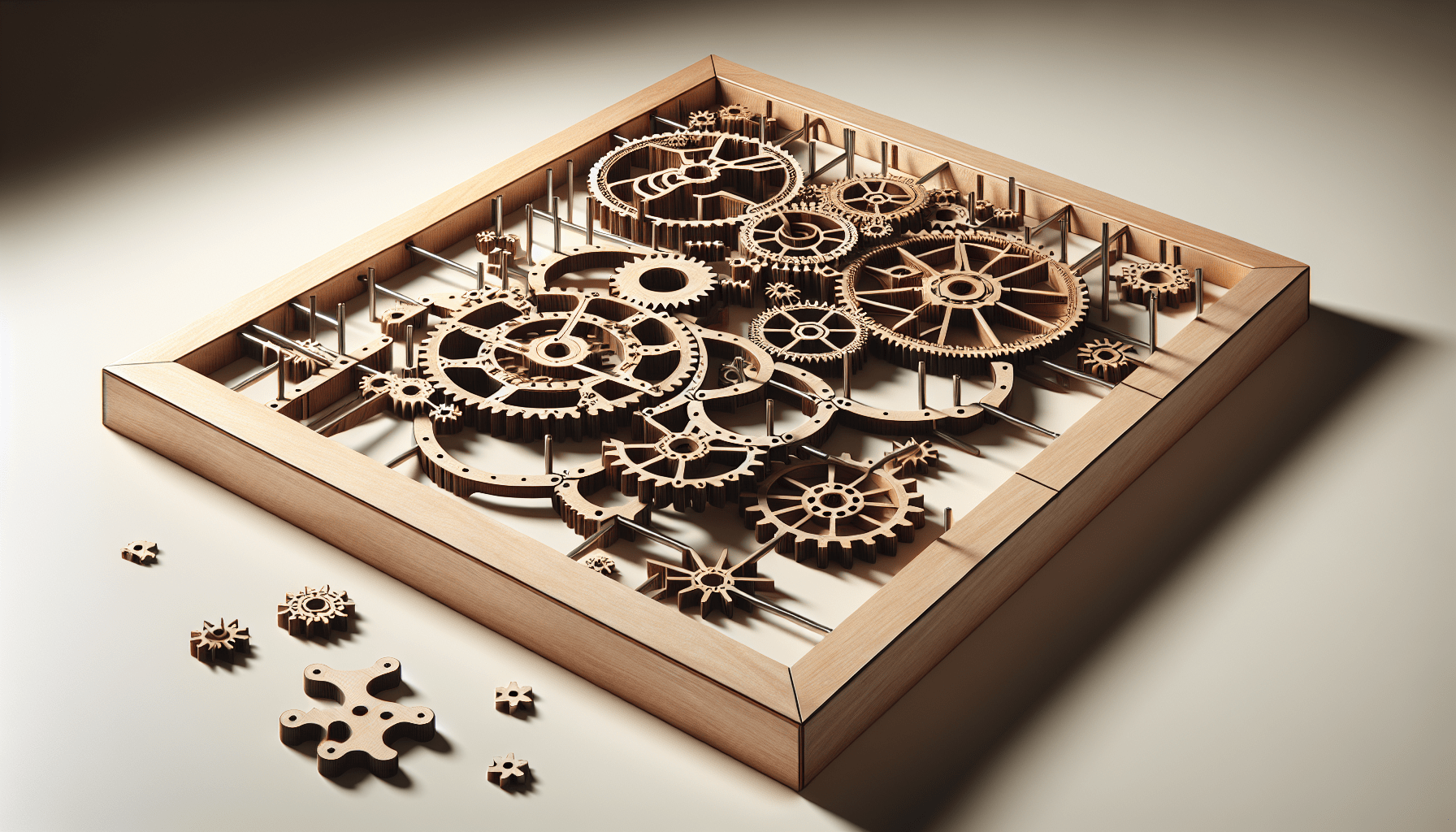Have you ever wondered if 3D wooden puzzles could improve your problem-solving skills? These intricate puzzles, made by brands like Robotime, Rokr, Ugears, and others, aren’t just fun to put together—they might also help you sharpen your mind. Let’s journey through the world of 3D wooden puzzles and explore how they can benefit your cognitive abilities.
What Are 3D Wooden Puzzles?
3D wooden puzzles are a step above the traditional 2D puzzle. These puzzles are made from finely cut wooden pieces that fit together to form a three-dimensional model. Whether it’s a clock, a vehicle, or an architectural marvel, each piece must be properly aligned and interconnected to complete the entire structure.
Popular Brands and Types
Several brands specialize in these fascinating puzzles. Here’s a quick look at some of the notable ones and their offerings:
| Brand | Specialties |
|---|---|
| Robotime | Mechanical models, vehicles |
| Rokr | Music boxes, mechanical wonders |
| Ugears | Functional models, gears & mechanics |
| Wood Trick | Educational kits, geography puzzles |
| EWA | Architectural models, kinetic sculptures |
| Vitascope | Motion pictures, optical models |
| Wooden City | Mechanical assemblies, decorative models |
| Handmadecity | Artistic, handcrafted models |
Each brand brings a unique flair and complexity to the realm of 3D wooden puzzles, making them suitable for a range of interests and skill levels.
The Link Between Puzzles and Cognitive Skills
Understanding Problem-Solving Skills
Problem-solving skills are your ability to find solutions to challenges and obstacles. These skills involve analytical thinking, creativity, and perseverance. From figuring out a complicated math problem to handling everyday tasks, these skills are critical in various aspects of life.
How Puzzles Can Enhance Cognitive Abilities
Puzzles, in general, have been known to enhance certain cognitive abilities. When you engage in assembling a 3D wooden puzzle, it requires you to:
- Analyze: You often need to carefully examine each piece and figure out where it fits.
- Plan: Strategizing the sequence to assemble parts.
- Persevere: Keep trying even when you face difficulties fitting pieces together.
- Innovate: Sometimes, you need to think creatively to get around tricky sections.
By exercising these aspects, you’re not just having fun—you’re giving your brain a workout.

Specific Cognitive Benefits of 3D Wooden Puzzles
Improved Spatial Reasoning
Building a 3D wooden puzzle significantly enhances your spatial reasoning—the ability to visualize and manipulate objects in a three-dimensional space. You’ll need to understand shapes, sizes, and how different pieces connect, offering a tangible way to practice these skills.
Enhanced Memory Function
To solve a 3D puzzle, you often have to remember the shapes and locations of various pieces. This continuous engagement aids in improving your short-term memory, which can have a lasting impact on your overall memory function.
Better Focus and Attention
3D wooden puzzles demand a high level of focus and attention to detail. Assembling these intricate pieces improves your ability to concentrate, which is a vital skill for both your academic and professional life.
Development of Patience and Perseverance
Working on these puzzles fosters patience. You’ll inevitably face moments when pieces don’t fit or sections don’t align as expected. Overcoming these challenges by persevering builds resilience and determination.
Heightened Analytical Skills
Solving 3D puzzles involves constant analysis—measuring pieces against templates, aligning edges, and assessing fits. This active engagement can boost your analytical thinking skills, essential for problem-solving.
Practical Applications of Enhanced Problem-Solving Skills
Academic Benefits
Enhanced problem-solving skills can directly influence your academic performance. Improved memory, better focus, and heightened analytical skills can make studying more effective and enjoyable, leading to better grades.
Professional Advantages
In the professional realm, problem-solving skills are highly valued. Being able to approach complex tasks methodically, analyze problems, and devise quick solutions can set you apart in your career.
Everyday Challenges
Daily life is full of small and big challenges. Whether it’s fixing a leaky faucet or planning a trip, good problem-solving skills make these tasks more manageable and less stressful.

Choosing the Right 3D Wooden Puzzle for Your Skill Level
Beginners
If you’re new to 3D wooden puzzles, start with simpler models. Look for puzzles that have fewer pieces and are easier to assemble. Brands like Robotime and Wood Trick offer beginner-friendly models.
Intermediate
Once you’ve got some practice, move on to intermediate-level puzzles. These will have more pieces and intricate parts but won’t be overwhelmingly complex. Ugears and Rokr have various models suitable for this skill level.
Advanced
For puzzle enthusiasts looking for a real challenge, advanced puzzles are the way to go. These models often have many pieces, including moving parts, and require meticulous attention to detail. Ugears and Wooden City offer some highly intricate and challenging puzzles.
| Level | Suggested Brands/Models |
|---|---|
| Beginner | Robotime Music Box, Wood Trick Animal Models |
| Intermediate | Ugears Mechanical Box, Rokr Marble Run |
| Advanced | Ugears Locomotive, Wooden City Ferris Wheel |
Tips for Assembling 3D Wooden Puzzles
Read Instructions Carefully
It might seem obvious, but thoroughly reading the instructions can save you a lot of time and frustration. Make sure you understand each step before proceeding.
Arrange Pieces Beforehand
Sorting and organizing pieces before starting can make the assembly process smoother. Group similar pieces together and keep them within easy reach.
Take Your Time
Rushing through a puzzle often leads to mistakes. Take your time to ensure each piece fits perfectly. If you get stuck, take a break and come back with a fresh perspective.
Use Tools If Necessary
Some pieces might require more force to fit together. Using tools like tweezers or gluing small parts can be helpful. Just ensure the use of tools doesn’t damage the pieces.
Seek Help If Stuck
If you find yourself stuck on a challenging section, there’s nothing wrong with seeking help. Online forums and communities dedicated to 3D wooden puzzles can offer useful advice and solutions.
FAQs
Can Children Benefit from 3D Wooden Puzzles?
Absolutely! These puzzles can be great educational tools for children. They help in developing fine motor skills, spatial awareness, and problem-solving abilities.
Are 3D Wooden Puzzles Durable?
Yes, 3D wooden puzzles are generally quite durable. However, it’s important to handle the pieces with care during the assembly process to avoid breaking any parts.
How Long Does It Take to Complete a 3D Wooden Puzzle?
The time required to complete a 3D wooden puzzle depends on the complexity and number of pieces. Simple models might take a few hours, while more intricate ones can take several days.
| Complexity | Time Required |
|---|---|
| Simple | 2-4 hours |
| Intermediate | 5-10 hours |
| Complex | Several days (spread over multiple sessions) |
Can These Puzzles Be Disassembled and Reassembled?
While it’s possible to disassemble and reassemble a 3D wooden puzzle, it might weaken the joints and connections. It’s generally recommended to keep the completed puzzle intact.
Where Can I Buy 3D Wooden Puzzles?
You can purchase these puzzles at various online retailers, including Amazon, eBay, and specialized hobby stores. Many of the brands also have their own official websites where you can browse their collections.
Conclusion
Yes, 3D wooden puzzles can indeed improve your problem-solving skills. By engaging in these tactile, visual, and mentally stimulating activities, you’re not only enjoying a fun hobby but also enhancing crucial cognitive abilities. So, the next time you’re looking for a puzzle, consider a 3D wooden one. It might just be the perfect brain exercise you need.
Looking to improve your problem-solving skills? Look through our reviews to find one you’d like to start!
Start Here